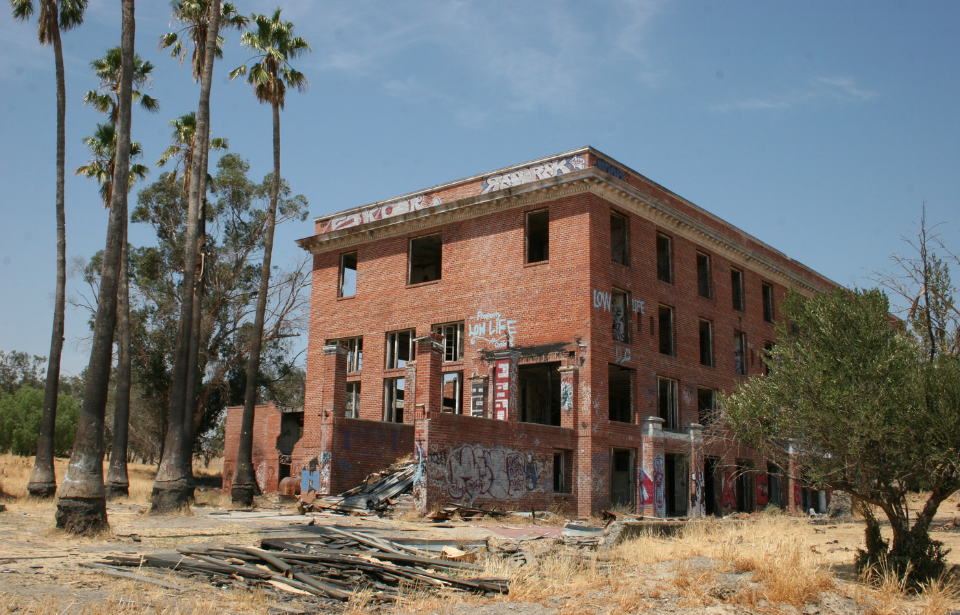Nestled in the sleepy town of Byron, California, the Byron Hot Springs Hotel stands as a haunting relic of a bygone era. Once a luxurious resort, the hotel now lies in ruins, its grandeur replaced by an eerie silence and crumbling walls. The structure, which once welcomed the elite and famous, now captivates the imagination of historians, photographers, and urban explorers alike. Its decaying facade and overgrown surroundings offer a stark contrast to the opulence it once embodied, and despite its current state, the hotel continues to be a subject of fascination.
The Byron Hot Springs Hotel went from glamour to ruins
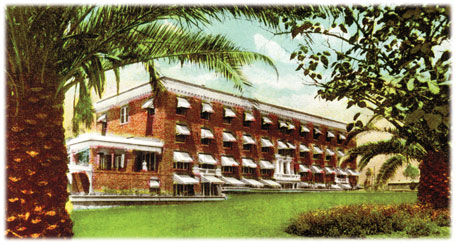
The hotel has a rich and tumultuous history. Originally a glamorous retreat for the elite, the hotel has seen its fair share of transformations. From a posh resort to a military interrogation center and even a monastery, its past is as varied as it is fascinating. In its heyday, the hotel was a beacon of luxury, attracting visitors from far and wide who sought the therapeutic benefits of its hot springs and the lavish accommodations it offered.
However, the passage of time has not been kind to the Byron Hot Springs Hotel. Today, it stands gutted and vandalized, a shadow of its former self. The once-bustling corridors are now silent, and the grand ballrooms are empty. The hotel’s decline is a testament to the changing tides of history and the inevitable decay that accompanies neglect and abandonment.
A historical timeline of the hotel
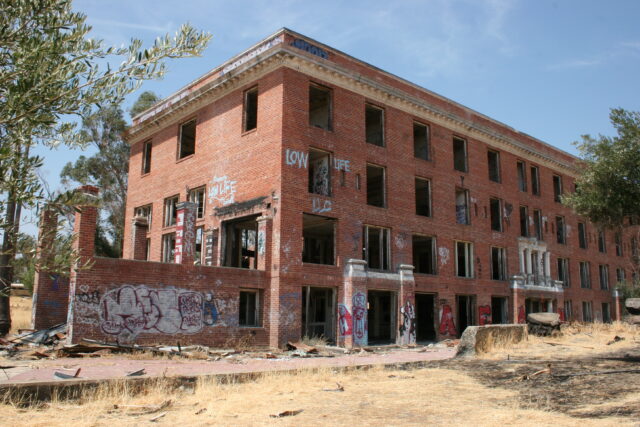
The history of the hotel is marked by several key events. In 1889, the Mead family took over the land, which included the hot springs, and converted the property into a hotel. Sadly, this burned down in 1901. Shortly after, a second hotel was built, which was also destroyed in a fire in 1912. The following year, a third hotel was built, which remained open and operational until 1938. However, when the United States entered WWII in 1941, the building was converted into an interrogation camp called Camp Tracy.
Each of these events has left an indelible mark on the Byron Hot Springs Hotel, shaping its legacy and contributing to its current state. From devastating fires to its role in wartime efforts, the hotel’s history is a tapestry woven with triumphs and tragedies, each thread adding to the complexity of its story.
Operating as Camp Tracy during WWII
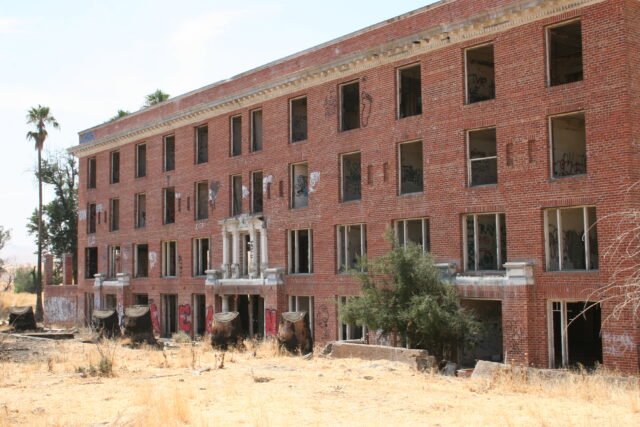
During World War II, the Byron Hot Springs Hotel was repurposed as Camp Tracy, an interrogation center for German and Japanese prisoners of war. The camp was unique in its approach, exercising cultural understanding and actually offering prisoners access to the hot springs. This period in the hotel’s history is a stark departure from its earlier days of luxury and leisure, highlighting the adaptability of the site and its significance in different contexts.
The transformation of the hotel into Camp Tracy underscores the strategic importance of the location during a critical time in history. The hot springs, once a source of relaxation and rejuvenation, became a tool in the war effort, providing a unique setting for intelligence gathering and prisoner interrogation.
Post-war ownership and decline
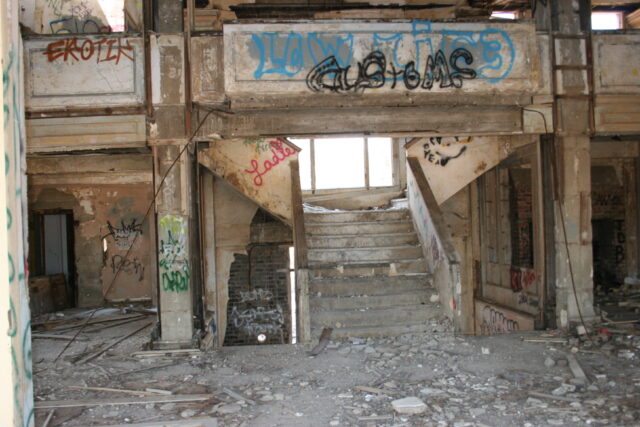
After the war, the property was sold to the Greek Orthodox Church and became Mission St. Paul. Over the years, it changed hands many times, with various owners attempting to restore the springs. However, financial issues, politics, and illness thwarted all plans for redevelopment, leading to its current state of neglect. Each failed attempt to revive the Byron Hot Springs Hotel has contributed to its gradual decline, leaving it in the state of disrepair that visitors see today.
The post-war years were a period of uncertainty and struggle for the hotel. Despite the best efforts of its successive owners, the property was unable to recapture its former glory. The challenges faced in these years serve as a poignant reminder of the difficulties inherent in preserving and restoring historical landmarks, particularly those with such a complex and varied past.
The ruins of Byron Hot Springs Hotel today
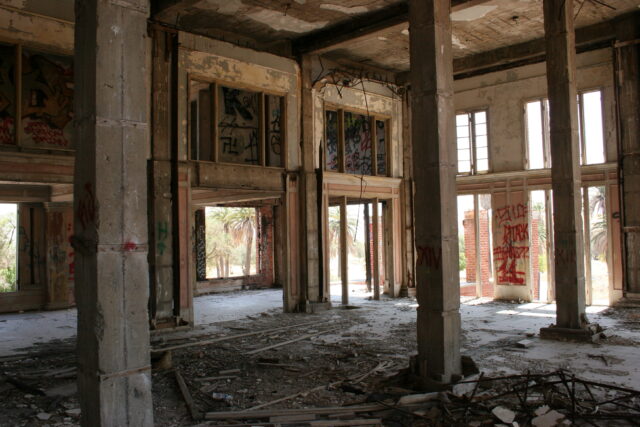
The Byron Hot Springs Hotel is a desolate yet strangely serene landscape. The three-story building is a skeleton of its former self, with broken concrete, missing elevators, and graffiti-covered walls. The grounds are littered with debris, and the occasional cowpie serves as a reminder of the cattle that now roam the area.
Exploring the ruins of the Byron Hot Springs Hotel is an experience that blends curiosity with caution. The crumbling structure poses various hazards, from unstable floors to sharp debris, making it essential for visitors to tread carefully. Yet, for those who dare to venture within, the hotel offers a hauntingly beautiful tableau of decay, where nature and history intertwine in a silent dance.
Modern-day ownership and access
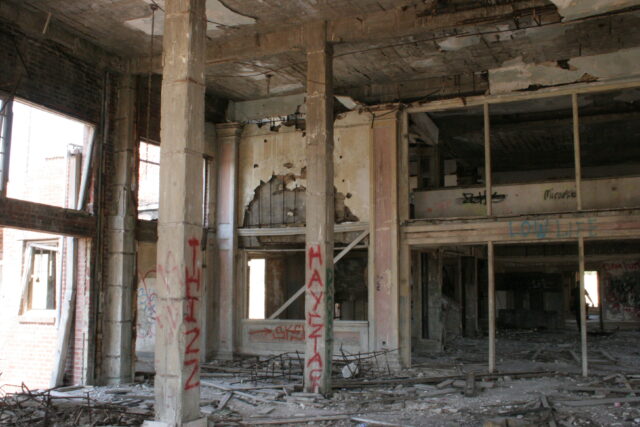
Today, Stonecrest Investment Group owns the property as part of the Coast Capital Income Fund, LLC. Despite its intriguing history, the property is private, and visitors are strongly advised to respect the “No Trespassing” signs. Neighbors are vigilant and quick to report unauthorized visitors. The current ownership has yet to announce any concrete plans for the future of the site, leaving its fate uncertain.
More from us: Hotel Monte Palace Was São Miguel’s Luxury Hotel, but Is Now an Urban Exploration Paradise
Access to the Byron Hot Springs Hotel remains restricted, with the property being closely monitored to prevent trespassing. However, this has not deterred the curious and adventurous from attempting to explore the ruins, but it is important to remember that unauthorized access is illegal and potentially dangerous. The hotel’s future hangs in the balance, with many hoping that it will one day be restored to its former splendor.
